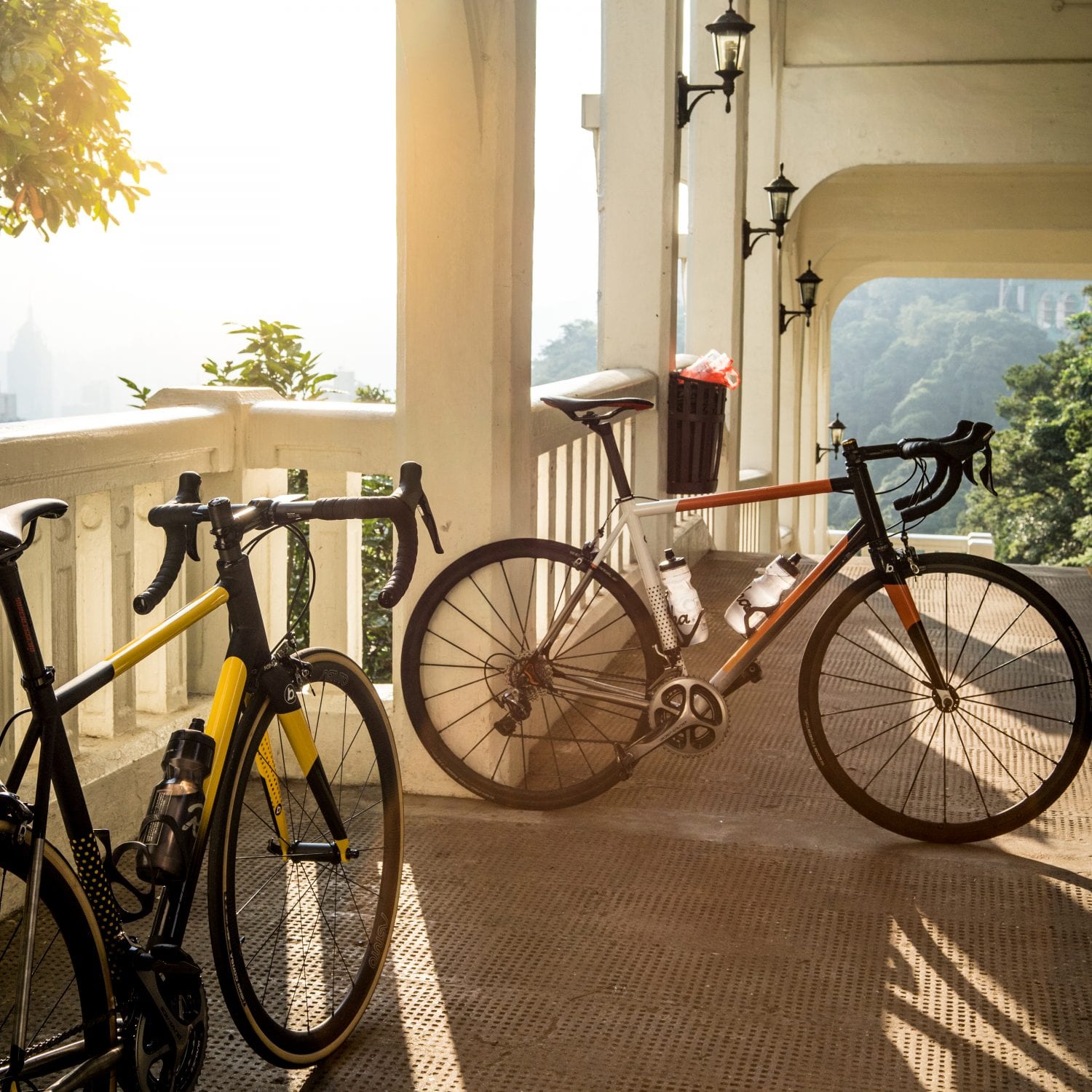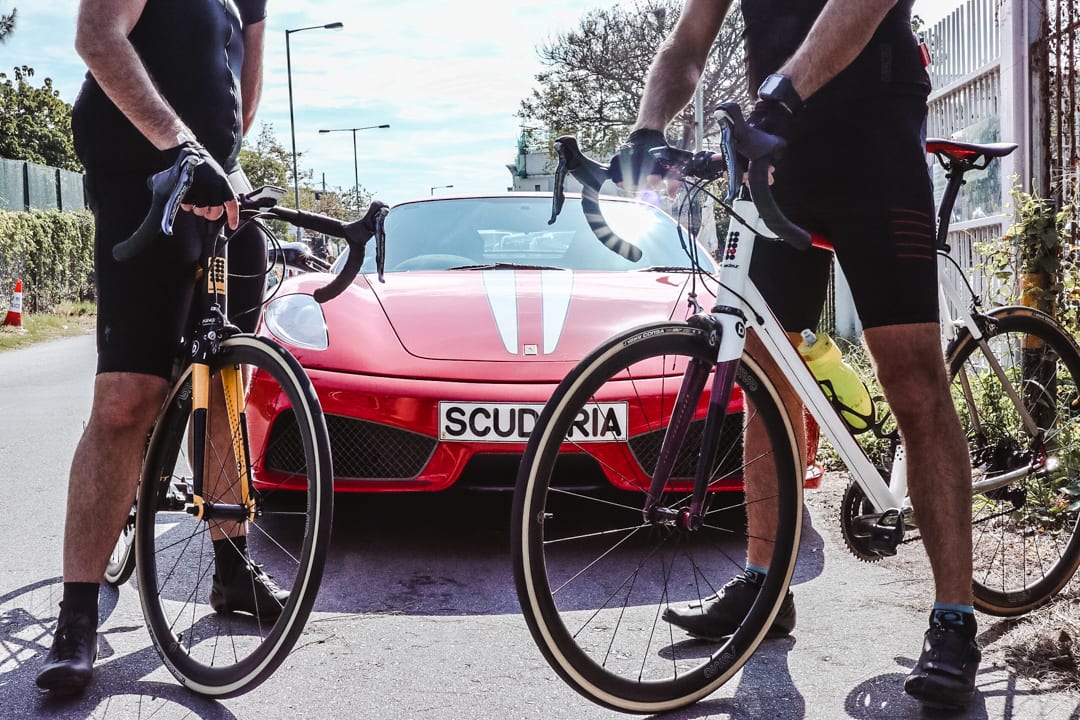SITTING IN: Interview with Marc Charnal
jim cotton Interest Hong Kong 14 January 2019
We spoke with Marc Charnal, a Frenchman who has come to call Hong Kong his home having lived in Asia for a number of years.
A true ‘baroudeur’ himself – the French term for breakaway artist – he left corporate life to form baroodeur, a brand of Titanium bikes that are for riders rather than those looking for a status symbol, and riders that can share the beauty of Asia with each other and showcase it to the world.
Can you tell me how baroodeur came about? What inspired you to leave the steady 9-5 world to set up your own business?
I was looking for a new bike, and I had always been interested in frames made from different materials, materials from the past. I purchased a titanium (Ti) frame from the USA, and the experience was poor; the decals were missing, a few things were wrong with the product, the customer communication with the manufacturer was poor, and it took nine months to get the frame! And that was from a big established Western brand. It made me wonder how they got away with the poor customer experience.
Given my background here in Asia, working with factories, I knew we could do something of at least the same quality, and provide a better service to the customer. I’ve been working in the Quality Control industry for 15 years, helping brands secure their supply chain by doing factory audits and product inspection for many industries all through Asia. So it was a really transferrable skill to manufacturing, and I knew how to communicate with suppliers, I understood the culture here in Asia. I knew that if you found the right people, you could get anything done.
As a creative guy, I wanted a break from corporate life. I’d got to the point in my work where I was managing, not creating solutions, and I wanted to create again. So it was time to take a break, do something different, and see where this leads.
Why did you choose titanium? There is clearly a market for it, particularly amongst aficionados in the UK.
I was always interested in alternative materials to carbon fibre; I knew that titanium was lighter than steel and was a little different. Ti tubes are mostly made in Asia, and so we could get the frames made here. Most bike frames are made in Taiwan and China, so all the know-how is over here; the people here know how to make bikes. 80% of bikes are made in Asia, even if the company selling them are based in the west.
I went with Ti not just because I find it a more appealing and exciting material to ride, but to ‘break away’; and do something different. Everyone rides carbon, and if I want to make a good and unique carbon product, it requires a lot of R&D. I didn’t want to make just another carbon frame, and I didn’t have the experience or funding required to make a really special carbon bike.
Ti bikes do have a certain appeal and kudos attached to them in my mind. I always associate them with a rider who knows what they want and who understands bikes rather than someone who just chose something from a website.
I want to make baroodeur a brand that is more a lifestyle brand than a performance brand.
To me, steel and Ti was really different. I looked at some steel bikes and the paintwork and frames stuck out as different. I knew they looked great and were something that could be kept for 30 years. I knew that if the paint was right, a Ti frame doesn’t go out of fashion. When I look at carbon frames from a few years ago, the shapes have completely changed and look outdated. However, a steel or Ti bike from 30 years ago still looks great and has style.
Asia seems to be quite a developing market for cycling at the moment. In the West, the bike industry is well developed and the trend is moving away from pure carbon frames, racing and speed, towards bespoke build, and riding for experience and adventure – for example the rise of gravel and bikepacking. Did you not consider tapping into that, maybe basing yourself back in France or elsewhere in Europe?
In Asia, the sport is new, and as you say, the niche side of things is a little more of a Western desire. People want big brands here – if the brand isn’t known, people don’t want to buy it as they don’t look cool on it. In mature markets, there’s a comeback to smaller artisan brands, but here people want to follow the trend – and people are less interested in small brands.
However, people are really interested in nice bikes here. There’s a few smaller steel brands that are making a killing here in Singapore and so on. I think the Asian market is a good place for smaller brands to focus on – there’s opportunity here.
Titanium frames aren’t as much about performance as a carbon frame. But you can loosely divide cyclists between people that ‘train’ or ‘race’ and people that ‘ride’ and most people over here ‘ride’. There are relatively few people that race in Asia, as the market is still developing people seem to be enjoying just riding. If you want to ‘ride’, you want to favour ride quality; if you want comfort, style and the experience, you might look at a titanium bike. It’s unique and it’s not just another Pinarello.
I also thought, there are very few boutique brands in Asia, or those that there are, they’re so boutique no one knows them outside of their home town. There’s definitely no small brands that I can think of doing steel or Ti bikes in Asia.
Having experienced an American Ti bike and having had a bad experience, I thought it would be badass if we could make a brand in Asia that’s a really good product and have an identity that was wholly Asian.
A big part of the baroodeur identity is that it’s for ‘experienced riders and bicycleheads turned road discoverers.’ Can you tell us a little more about that?
Anyone can buy any bike nowadays. You can buy a super-nice bike, but it doesn’t mean anything if you’re not a good rider. A lot of people here buy the most expensive bike, but they don’t know how to ride. You don’t buy a sports car when you’re 18 years old. You progress your cars step by step, and when you’re a bit more experienced you get something really nice.
Part of the brand identity is about ‘qualifying’ to be able to purchase the frame – you ask that riders complete a ride of a set difficulty to qualify themselves for a bike – can you explain that a little, do you not worry that’s a risky strategy for a small business?
People in Asia can afford any bike but they don’t always have much experience. With baroodeur, it’s not about your money, it’s about your passion and how much you love riding. That’s why I wanted to set up the entry method. If you’re a good rider, the desire is as much for the riding and the experiences as having the very lightest, fastest, newest bike.
Minimum entry requirements are that you complete a ride of 120km and 1500m+, but that can be altered a little if you have no hills in your area.
I think a slight barrier to purchase is worth it. I want to make the brand exclusive, not around the price, but around the quality of the rider. It’s not a commercial brand; the success of baroodeur for me is in a bunch of riders sharing rides and images and experiences. We’re a lifestyle brand for riders who know how to ride.
And sure, we’re exclusive in that respect, but today there is no financial interest for me. The price of the frameset is pretty low relative to its cost but today the priority is to grow the baroodeur community and start organising rides across Asia. Once we reach this point, another chapter of Baroodeur will open.
As well as the exclusivity element, another central part of the brand’s identity is that it’s rooted in Asia. As you say on your website: “We proudly develop baroodeur out of Hong Kong and we ride across Asia as much as we can. Join us to build an alternative vision of what cycling is about in the the Far East!”
I want the brand to explore Asian life on the bike, and share that socially. At the moment, I want to only sell in Asia.
What you see here are things you never see in Europe. When you live in Hong Kong and Bangkok, things are ordinary that you’d never see elsewhere, and I want us to explore that. And the riding here is phenomenal and it’s always overlooked in favour of central Europe.
I’ve been fortunate to travel through most of South East Asia with Rapha, and there’s so many amazing areas for riding that you don’t associate with riding. When you think about cycling in the mountains you think about France and Italy, but there’s so many amazing rides in Chiang Mai, Taiwan, Indonesia that need exploring. Hopefully that’s the next step. When we get some more barooduers on the road, hopefully we can start organising some rides, sharing the rides through videos and experiences. I’m really excited to sell a few more bikes and then start really expanding the social side of the brand.
And that’s where baroodeur do something different for you as a rider; if you buy a Specialized or Pinarello, you’re just another name in their computer, buy a baroodeur you have access to our social network, you have access to and are a part of our community of cool Asian cyclists. Because of this, I don’t want to sell outside Asia at the moment. If I do that, the riders won’t be able to share experiences together.
When we get big enough, then I’ll think about selling elsewhere, but for me Asia is where the heart of the brand is, and I want to develop the community here and get people on the bikes to explore this amazing place.
Lastly, what’s the craziest thing you’ve seen on the bike?
On a descent in Chiang Mai last year, I rounded a corner and just in front of me was a huge fat two meter long snake, like a Boa, in the middle of my lane. It only appeared in the last second…. I was going to try to jump over it, but in the end, I managed to miss it by centimetres. I was on my own so it was pretty terrifying. And that encapsulates the brand – you experience things on a baroodeur you definitely don’t get in Europe.
-
Baroodeur
Visit site




